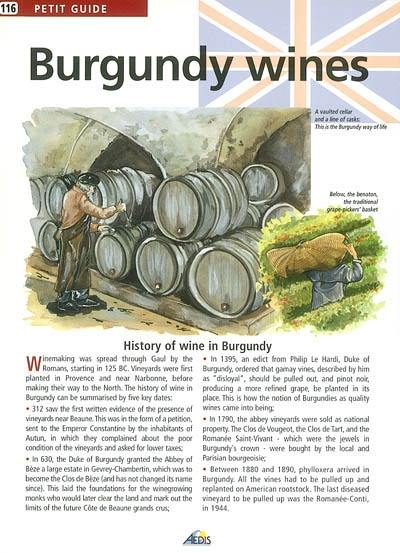
Collection(s) : Petit guide
Paru le 01/04/2005 | 8 pages
Tout public
illustrations Carine Planchon, Pierre Quentin
Appellation Beaune contrôlée : you could equally see "appellation Beaune premier cru contrôlée" or "appellation contrôlée". One of the three wordings must appear on all bottles of Burgundy (where no vin de pays or table wine is produced).
Clos des Mouches : the name of the particular `climate'. Here we can only tell that it is a premier cru by guessing, as it is not compulsory to state this on the label. Note the difference in size between "Beaune" and "Clos des Mouches". This is because Clos is a well known climate.
Récolte du domaine (estate picked) : indicates that Joseph Drouhin is the owner of the Clos des Mouches and that he has not bought in grapes from other vine growers. The use of the word `domaine' (estate) (as in "mis en bouteille au domaine" -estate bottled) is exclusively reserved for vineyard owners.
Mis en bouteille par (bottled by) :
How to serve Burgundy wine
ù Selecting the right glass :
ù Decanting : a word of caution
Pinot noir is a variety with a fragile colour and aromas : an old burgundy is more susceptible to oxidation than a bordeaux. If you decant it, you may end up with a reddish-brown, flat wine. However, oxygen may add life to vintages that age well and often have a closed nose : 1993, 1995 and 1996.
ù Choosing the right temperature.